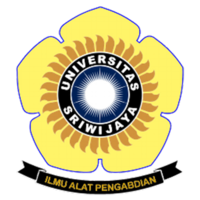UTILIZING TECHNOLOGY IN LANGUAGE EDUCATION
Abstract
Abstract: Technology is nothing if people cannot utilize it properly. Since it is the digital era, the use of technology for instruction specifically language learning is a must. Educators no longer force their ways of conventional teaching. The teachers must adapt to their students' modern environment in which the students everytime and everywhere have their handphones at their hands. Therefore, they must be able to make use of the circumstances to utilize the technological devices for learning. This paper elaborates the benefits of the internet in learning English and the use of technology in the classrooms.
Full Text:
10-17References
Anderson (2005). The Use of Alternative Social Networking Sites in Higher Educational Settings:
A Case Study of the E-Learning Benefits of Ning in Education. Retrieved from
https://pdfs.semanticscholar.org/d1df/6358e706c08c010815db24b95e4fe60b84e5.pdf
accessed on 26th November 2017
Anderson (2007). E-books as textbooks in the classroom. Retrieved from https://ac.elscdn.com/S1877042812026390/1-s2.0-S1877042812026390-main.pdf?_tid=aa62243ad84b-11e7-a516-
aab0f6b&acdnat=1512320695_d1a71036c2864217692b800d4a18dcc3 accessed on
th
November 2017
Certiport (2012) Students Present Digital Literacy Credentials to Universities and Workplace for
Competitive Edge
Dawson (2006). The Use of Alternative Social Networking Sites in Higher Educational Settings: A
Case Study of the E-Learning Benefits of Ning in Education. Retrieved from
https://pdfs.semanticscholar.org/d1df/6358e706c08c010815db24b95e4fe60b84e5.pdf
accessed on 26th November 2017
Fisher , M. (2015) Digital Learning Strategies: How do I assign and assess 21st century work?,
courtesy of Mike and ASCD as a limited-time offer for Connected Educator Month (CEM)
Haidir, M., Salam, U., & Husin, S. (2015). The Use of Internet for Independent English Learning.
Retrieved December 1st, 2017 from http://download.portalgaruda.org/article.php?
article=320373&val=2338&title=THE%20USE%20OF%20INTERNET%20FOR
%20INDEPENDENT%20ENGLISH%20LEARNING
Hellman (2010). E-books as textbooks in the classroom. Retrieved from https://ac.elscdn.com/S1877042812026390/1-s2.0-S1877042812026390-main.pdf?_tid=aa62243ad84b-11e7-a516-
aab0f6b&acdnat=1512320695_d1a71036c2864217692b800d4a18dcc3 accessed on
th
November 2017
Inderawati, R. (2011). From Classroom to Peer Comment in Facebook: Bridging to Establish
Learners’ Literacy. Dipresentasikan dalam The 4th International Conference ICT for
Language Learning di Florence, Italy, 20-21 Oktober 2011.
Inderawati, R., & Sofendi. (2018). Creating and innovating English language teaching by
developing cultural model for Literacy. Paper presented at the 1st Communication Forum of
Teacher Training and Education Faculty Leaders International Conference on Education
(ICE 2017). Proceedings: Advances in Social Science, Education and Humanities
Research, volume 174. Atlantis Press.
Islam, M. (2011). Independent English Learning through the Internet. Retrieved December 1st,
from http://www.academypublication.com/issues/past/jltr/vol02/05/17.pdf
Khare S., Thapa N., and Sahoo K. C. (December, 2007). Internet as a Source of Information.
Retrieved December 1st, 2017 from
http://nopr.niscair.res.in/bitstream/123456789/.../1/ALIS%2054%284%29%20201-206.pdf
Parra, Y. F. (2010). 21st Century Skills and the English Foreign Language Classroom: A Call for
More Awareness in Colombia. Retrieved December 1st, 2017 from
http://www.academia.edu/5415351/21st_Century_Skills_and_the_English_Foreign_Langu
age_Classroom_A_Call_for_More_Awareness_in_Colombia
Scott, C. L. (2015). What Kind of Learning for the 21st Century?. Retrieved December 1, 2017
from http://unesdoc.unesco.org/images/0024/002429/242996E.pdf
Article Metrics
Abstract view : 280 times10-17 - 197 times
Refbacks
- There are currently no refbacks.
